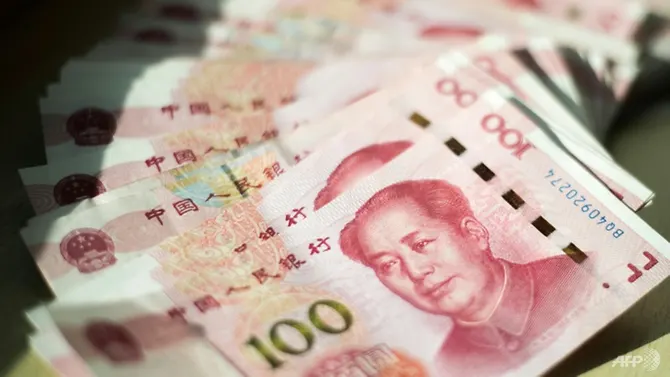Chinese yuan falls to weakest level against US dollar since 2010
05 August, 2019

The Chinese yuan fell to its lowest level against the US dollar since August 2010 in morning trade on Monday (Aug 5), fuelling speculation that Beijing is allowing currency depreciation to counter threatened US tariffs.
The offshore currency weakened to 7.1085 to the dollar, days after US President Donald Trump announced a plan to impose fresh tariffs on another US$300 billion in Chinese goods, escalating trade war tensions between the world's two biggest economies.
The onshore yuan also tumbled, hitting 7.0307 on Monday morning trade to reach its lowest level since 2008.
Both the onshore and offshore yuan breached the 7.0 level against the dollar, which investors see as a key threshold in currency value.
Trump has frequently accused China of artificially devaluing its currency in order to support its exports - charges long denied by Beijing.
The US president jolted global stock markets last week when he issued the threat of more tariffs just a day after US and Chinese trade negotiators revived talks aimed at ending the year-long dispute.
The extra 10 per cent duties Trump threatened to implement from September 1 would mean he has now targeted virtually all of the US$500 billion in goods America buys from China every year.
CURRENCY INSTABILITY
China on Friday threatened to retaliate to any new tariffs slapped on by the US - it has already imposed its own duties on US$110 billion in American goods, almost all of the products it imports from the US.
A report from Bloomberg News said China has also asked its state-owned enterprises to stop buying US farm goods, in a further sign of escalating tensions.
The yuan is not freely convertible and the government limits its movement against the US dollar to a 2 per cent range on either side of a central parity rate which the People's Bank of China (PBOC) sets each day to reflect market trends and control volatility.
The daily central rate was at 6.9225 per dollar on Monday, 0.33 per cent weaker from Friday.
Against the Singapore currency, the yuan was at 5.0855 per Singapore dollar as of noon on Monday, down 0.93 per cent from the previous close.
"It appears that the tariffs hike suggests the return of tit-for-tat moves and a suspension of trade talks, and the PBOC sees no need to keep the yuan stable in the near term," Ken Cheung, a senior currency strategist at Mizuho Bank, told Bloomberg News.
In a statement Monday morning, the PBOC said it would "resolutely crack down on short-term speculation and maintain stable operation of the foreign exchange market and stabilise market expectations."
It went on to say that it had the "experience, confidence and ability to keep the RMB exchange rate basically stable at a reasonable and balanced level."
Julian Evans-Pritchard, senior China economist with Capital Economics, said the PBOC has "effectively weaponised the exchange rate" by linking the currency with the US trade war.
"Given that their goal is presumably to offset some of the impact from additional US tariffs, they are likely to allow the currency to weaken further, probably by 5 to 10 per cent over the coming quarters," said Evans-Pritchard.
Source:
